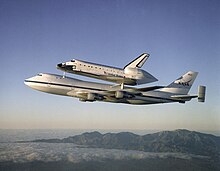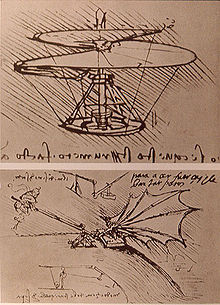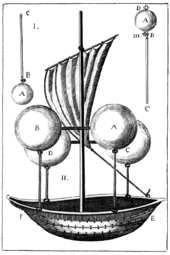
An aircraft is a vehicle that is able to fly by gaining support from the air. It counters the force of gravity by using either static lift or the dynamic lift of an airfoil, or, in a few cases, direct downward thrust from its engines. Common examples of aircraft include airplanes, helicopters, airships, gliders, paramotors, and hot air balloons.

Aerodynamics is the study of the motion of air, particularly when affected by a solid object, such as an airplane wing. It involves topics covered in the field of fluid dynamics and its subfield of gas dynamics, and is an important domain of study in aeronautics. The term aerodynamics is often used synonymously with gas dynamics, the difference being that "gas dynamics" applies to the study of the motion of all gases, and is not limited to air. The formal study of aerodynamics began in the modern sense in the eighteenth century, although observations of fundamental concepts such as aerodynamic drag were recorded much earlier. Most of the early efforts in aerodynamics were directed toward achieving heavier-than-air flight, which was first demonstrated by Otto Lilienthal in 1891. Since then, the use of aerodynamics through mathematical analysis, empirical approximations, wind tunnel experimentation, and computer simulations has formed a rational basis for the development of heavier-than-air flight and a number of other technologies. Recent work in aerodynamics has focused on issues related to compressible flow, turbulence, and boundary layers and has become increasingly computational in nature.

Unpowered aircraft can remain airborne for a significant period of time without onboard propulsion. They can be classified as gliders, lighter-than-air balloons and tethered kites. In the case of kites, lift is obtained by tethering to a fixed or moving object, perhaps another kite, to obtain a flow of wind over the lifting surfaces. In the case of balloons, lift is obtained through inherent buoyancy and the balloon may or may not be tethered. Free balloon flight has little directional control. Gliding aircraft include sailplanes, hang gliders, and paragliders that have full directional control in free flight.

A fixed-wing aircraft is a heavier-than-air flying machine, such as an airplane, which is capable of flight using wings that generate lift caused by the aircraft's forward airspeed and the shape of the wings. Fixed-wing aircraft are distinct from rotary-wing aircraft, and ornithopters. The wings of a fixed-wing aircraft are not necessarily rigid; kites, hang gliders, variable-sweep wing aircraft and airplanes that use wing morphing are all examples of fixed-wing aircraft.

Aviation includes the activities surrounding mechanical flight and the aircraft industry. Aircraft includes fixed-wing and rotary-wing types, morphable wings, wing-less lifting bodies, as well as lighter-than-air craft such as hot air balloons and airships.

Flight or flying is the process by which an object moves through a space without contacting any planetary surface, either within an atmosphere or through the vacuum of outer space. This can be achieved by generating aerodynamic lift associated with gliding or propulsive thrust, aerostatically using buoyancy, or by ballistic movement.

The history of aviation extends for more than two thousand years, from the earliest forms of aviation such as kites and attempts at tower jumping to supersonic and hypersonic flight by powered, heavier-than-air jets.
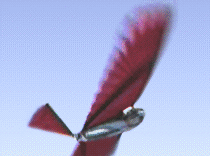
An ornithopter is an aircraft that flies by flapping its wings. Designers sought to imitate the flapping-wing flight of birds, bats, and insects. Though machines may differ in form, they are usually built on the same scale as flying animals. Larger, crewed ornithopters have also been built and some have been successful. Crewed ornithopters are generally either powered by engines or by the pilot.
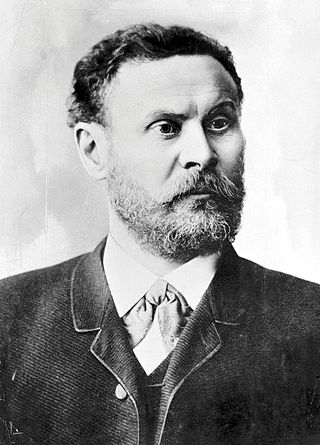
Karl Wilhelm Otto Lilienthal was a German pioneer of aviation who became known as the "flying man". He was the first person to make well-documented, repeated, successful flights with gliders, therefore making the idea of "heavier than air" a reality. Newspapers and magazines published photographs of Lilienthal gliding, favourably influencing public and scientific opinion about the possibility of flying machines becoming practical.
This is a list of aviation-related events from 1905:
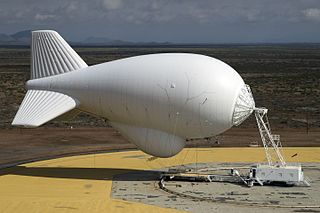
An aerostat is a lighter-than-air aircraft that gains its lift through the use of a buoyant gas. Aerostats include unpowered balloons and powered airships. A balloon may be free-flying or tethered. The average density of the craft is lower than the density of atmospheric air, because its main component is one or more gasbags, a lightweight skin containing a lifting gas to provide buoyancy, to which other components such as a gondola containing equipment or people are attached. Especially with airships, the gasbags are often protected by an outer envelope.
This is a list of aviation-related events during the 18th century :
This is a list of aviation-related events during the 19th century :

An airplane, or aeroplane, informally plane, is a fixed-wing aircraft that is propelled forward by thrust from a jet engine, propeller, or rocket engine. Airplanes come in a variety of sizes, shapes, and wing configurations. The broad spectrum of uses for airplanes includes recreation, transportation of goods and people, military, and research. Worldwide, commercial aviation transports more than four billion passengers annually on airliners and transports more than 200 billion tonne-kilometers of cargo annually, which is less than 1% of the world's cargo movement. Most airplanes are flown by a pilot on board the aircraft, but some are designed to be remotely or computer-controlled such as drones.

Early flying machines include all forms of aircraft studied or constructed before the development of the modern aeroplane by 1910. The story of modern flight begins more than a century before the first successful manned aeroplane, and the earliest aircraft thousands of years before.

A hybrid airship is a powered aircraft that obtains some of its lift as a lighter-than-air (LTA) airship and some from aerodynamic lift as a heavier-than-air aerodyne.
James D. DeLaurier is an inventor and professor emeritus of the University of Toronto Institute for Aerospace Studies. He is a leader in design and analysis of lighter than air vehicles and flapping winged aircraft.

Paul F. Bikle was director of the U.S. National Aeronautics and Space Administration (NASA) Dryden Flight Research Facility from 1959 until 1971, and author of more than 40 technical publications. He was associated with major aeronautical research programs including the hypersonic X-15 rocket plane, and was a world record-setting glider pilot.
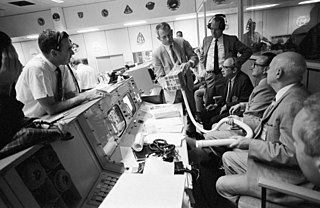
Aerospace engineering is the primary field of engineering concerned with the development of aircraft and spacecraft. It has two major and overlapping branches: aeronautical engineering and astronautical engineering. Avionics engineering is similar, but deals with the electronics side of aerospace engineering.
Aerodynamics is a branch of dynamics concerned with the study of the motion of air. It is a sub-field of fluid and gas dynamics, and the term "aerodynamics" is often used when referring to fluid dynamics
